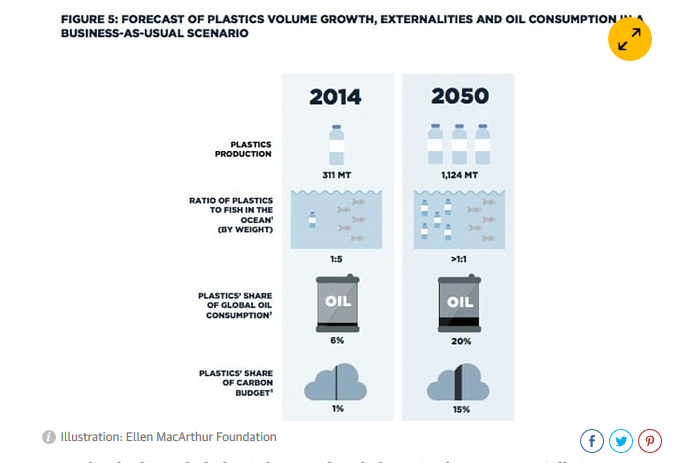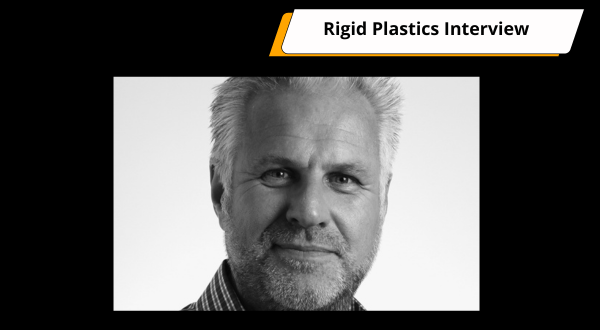Blog - Single Use Plastic Food Packaging: How to deliver Improved Environmental Performance. A Post-RECOUP conference report

This article, written by Nick Parker, Marketing Director at Aegg Creative Packaging, is aimed at those involved in the buying decisions for rigid plastic packaging for food applications in UK & global retail and out of home markets.
The views are largely those of the author, the desire being to encourage debate and expression of opinion. If you would like to comment, please use the comment section at the foot of this article.Introduction
Here at Aegg we are taking our environmental responsibility seriously. And increasingly so. We are investing more time and more money in understanding the difficult issues involved in responsible corporate citizenship.
Attending the recent RECOUP (RECycling Of Used Plastics) Conference was one such investment. This annual event is perhaps a unique opportunity to be involved in the robust debating between key environmental spokespeople from all parts of the industry. This year Marks and Spencer, Innocent Drinks, WRAP, Sky Ocean Rescue, Greenpeace, Veolia, RPC and the UK Government all made significant contributions.
As if we should need any more proof of the need to change our environmental attitudes & behaviours...
The Times Higher Education /Lindau 2017 survey of 50 Nobel Laureates Survey cites the leading threats to the existence of humankind. These big brains conclude that the No 1 issue threatening the very existence of the human race is the threat to the environment.
A truly shocking prediction by the Ellen MacArthur Foundation is that there will be more tonnes of plastic than tonnes of fish in the world’s oceans by 2050.

We truly have created a nightmare for our children. They will not have a free choice over the use of plastics: our generation and the generation before us, had the choice. Some startling facts:
- Mass production of plastics, which began just six decades ago, has accelerated so rapidly that it has created 8.3 billion metric tons across the globe. Only 12 percent of the plastic ever produced has been incinerated. Every other piece of plastic that was ever made still exists, and will continue existing for at least 500 years.
- 95 percent of plastic is thrown out after being used just once, and 8 million tonnes of plastic - or one garbage truck-full every minute - ends up in our oceans each year.
Key strategic considerations for the manufacturers of plastic packaging
Here at Aegg, our environmental initiatives are a topic for review on our monthly Board meeting agenda. The speakers at this year’s RECOUP, without knowing it, have influenced our corporate thinking. The following contributions made at the Conference are of interest to the Aegg Board:
- As Stuart Lendrum, Head of Sustainable & Ethical Sourcing, Sainsbury’s said: “for a new packaging material to be accepted into Sainsbury’s way of thinking, handling the waste material has got to be in the interests of the entire closed loop of stakeholders. If this interest breaks down at any point downstream of Sainsbury’s (e.g. waste segregation at recycling points) then Sainsbury’s are simply not interested in this new material.” (Author comment: hence the reason for lack of interest, in scale, in Polylactic Acid (PLA)).
- Our collective success in influencing the rates of recycling is highly dependent on how well householders are kept informed and how well they understand these communications. All stakeholders have a role to play in this messaging, including manufacturers, retailers and local councils.
- Some manufacturers have environmentalism etched into their DNA (e.g. Innocent Drinks. And other ‘challenger brands’ are increasingly using environmentalism as a marketplace differentiator too). Very commendably, Innocent acknowledge that if we want to protect the environment, it is probable that they (and hence, we) will have to pay a commercial premium to achieve it. (For example: BioPET material being 15% more expensive than ‘standard’ PET). The implication of corporate environmental DNA, for a packaging manufacturer such as Aegg, is that we should be wise about where we invest our supply partnership time: some companies (typically larger corporates, with notable exceptions) will ultimately decide against the more costly, environmentally-better solution, despite their initial overtures to the contrary.
- As Helene Roberts, Group Marketing and Innovations Director, LINPAC said, the fundamental question is, 'once the genie is out of the bottle, how do we get the plastic back for reuse’. Helene also commented:
- LINPAC simply can’t obtain enough recyclates. There is a healthy end market for rPET but supply of material is limited.
- Despite widespread opinion, expanded polystyrene (EPS) can be recycled. The problem is in the sourcing of material from disparate locations.
- rPET has a similar price to virgin PET. It is becoming a product brand choice, not a price choice.
- Ton Emans, President, Plastics Recyclers Europe pointed out that Brexit will provide many global opportunities, both for UK companies and for the UK Government. Much of this will come from the ability to create new, independent environmental standards. Ton went on to suggest that the UK Government should sort its own house out and create a national waste and resource strategy.
I certainly came away from the Conference feeling that the UK Government is playing it a bit ‘laissez faire’ on environmental initiatives. The view expressed by the civil servant was that the Government position was to leave the market place to decide which way to turn. Ultimately, he went on to say, the marketplace is what drives innovation. However, I do think that Government needs to take a more practical stance, including the creation of a green brand positioning for the UK. This is what other countries are doing: effective from 2020, France has passed a new law to ensure all plastic cups, cutlery and plates can be composted and are made of biologically-sourced materials. And China’s green fence initiative, limiting the import of contaminated waste for recycling, is another example of a government making a strong green stand that will have ramifications back in the UK.
Innovations that Aegg will be looking out for
Recyclability by Design
RECOUP is championing a very sensible initiative: distribution of a guidance document to help manufacturers embed environmental features (notably recyclability) into early stage product design. This document is reviewed annually.
It stands to reason that the use of inks, glues, multiple materials and labels all contribute to reducing the recyclability, and market value, of plastic packaging.
Retailers state that they are increasingly using computer models to evaluate the recycling performance of any new packaging proposal. Where in the past, these retailers may have used their own models for assessing performance, it is increasingly likely that there will be an industry wide standard, as the one supported by OPRL. This is likely to take effect from early 2018.
BioPET
Innocent Drinks will be using plastic bottles made with 30% rPET by 2018. Of more interest than this is the fact that the company wants to use BioPET as soon as practically possible. BioPET is the same polymer as regular PET, but originates from a replaceable biological source. Whilst this will initially come from plant crops, the company’s intention is that, given time, food waste will become the source.
But let’s not get too carried away
Plastic is a miracle material (no lesser a claim made by one speaker at the Conference). To test this, try going to hospital and seeking treatment without the use of any plastic.
There was strong opinion voiced at the Conference that the creation and use of plastic packaging uses less resources than what would otherwise go to waste. Intuitively this sounds right, especially when it comes to perishable foodstuffs. Seeing the statistics and research behind this would add weight to the opinion.
Five countries dump more plastic into the oceans than the rest of the world combined. These counties are: China, Indonesia, Philippines, Thailand and Vietnam. Some commentators suggested that we are therefore looking in the wrong places for the quickest wins.
A radical thought, or two…
It’s a little way off reality yet, but turning plastic into fuel for our cars is closer than science fiction. Scientists simply need to address the economics of doing so (!!).
And how refreshing was it is to hear Kevin Vyse, Senior Packaging Technologist and Packaging Innovation Lead, Marks and Spencer, stand up from the RECOUP Conference floor and make the following statement, (or words to the same effect):
"We have a real opportunity for change. And a change in company strategy. Do we really need to make 10% profit every year? We need to really rethink things and turn them upside down."
And one to leave you with…
Did you know that if you are lucky enough to eat (and enjoy?!) an oyster, you will also be eating an average of 8.3 pieces of plastic.


